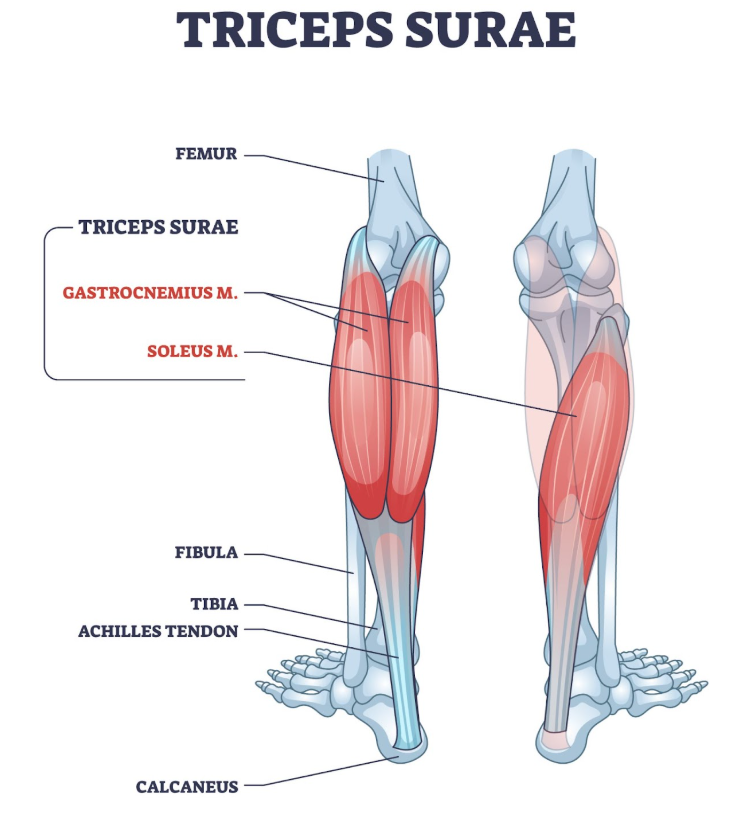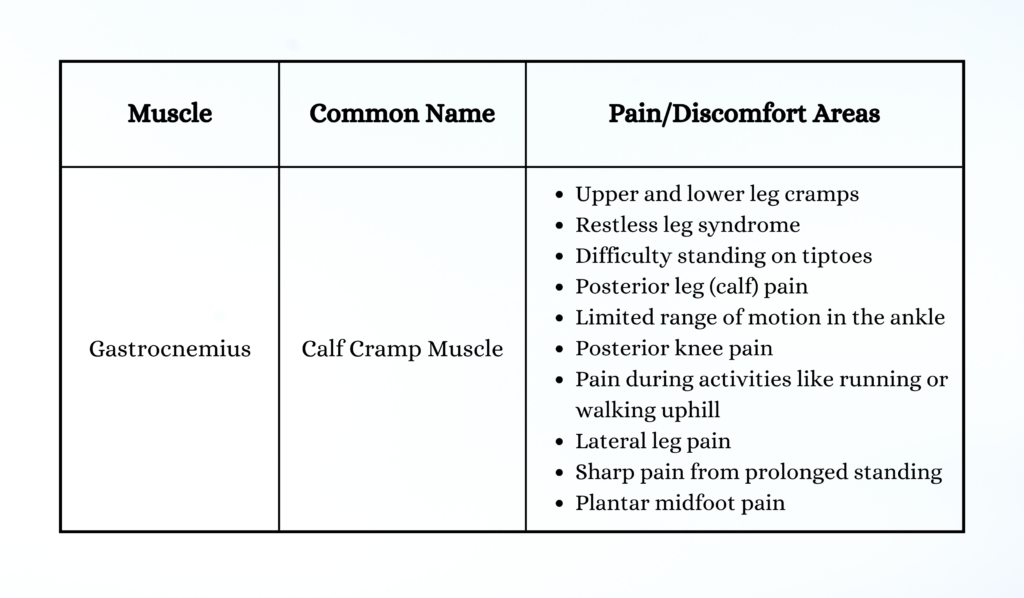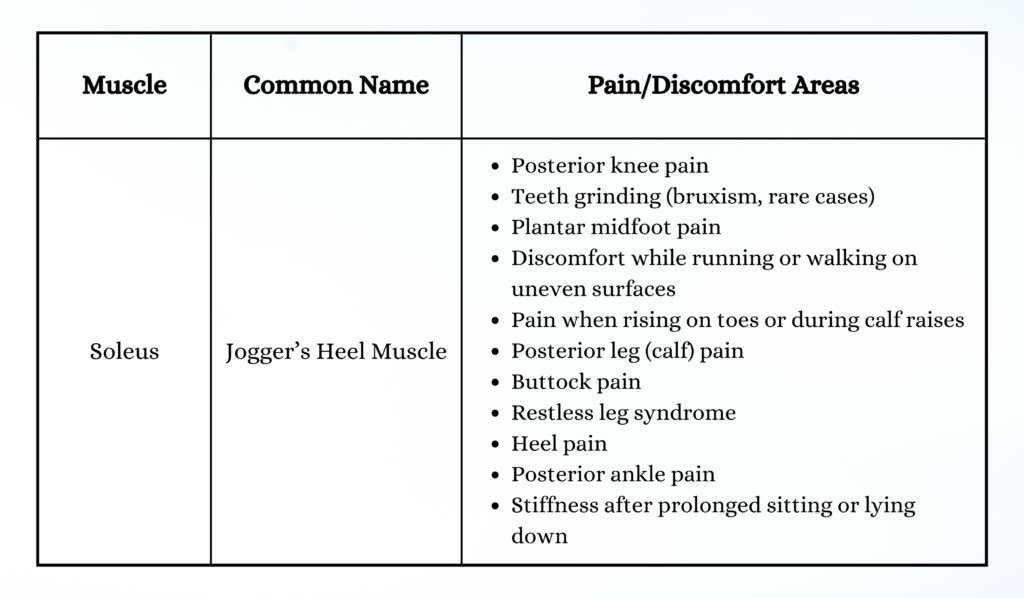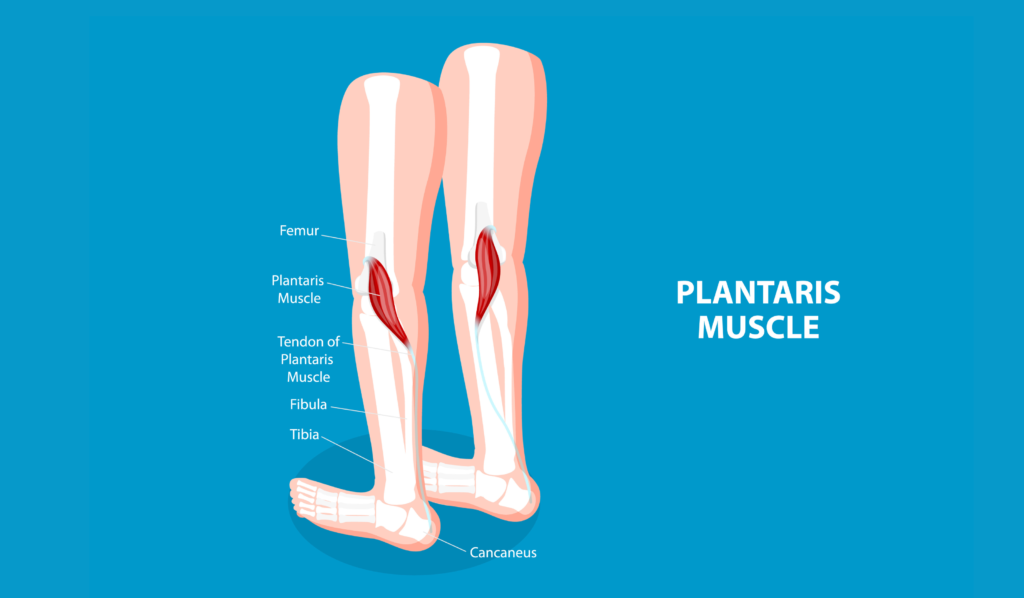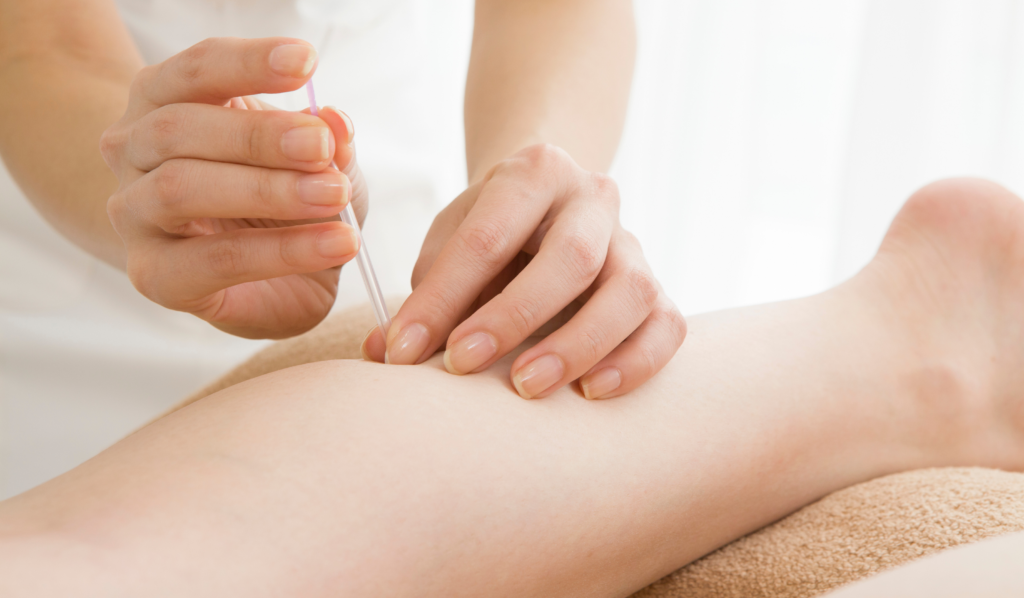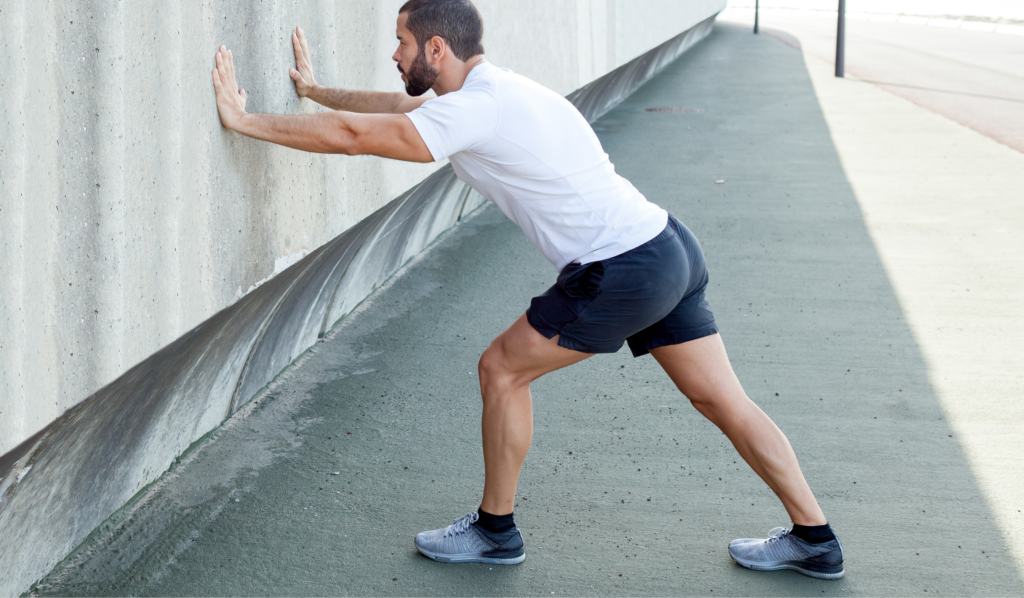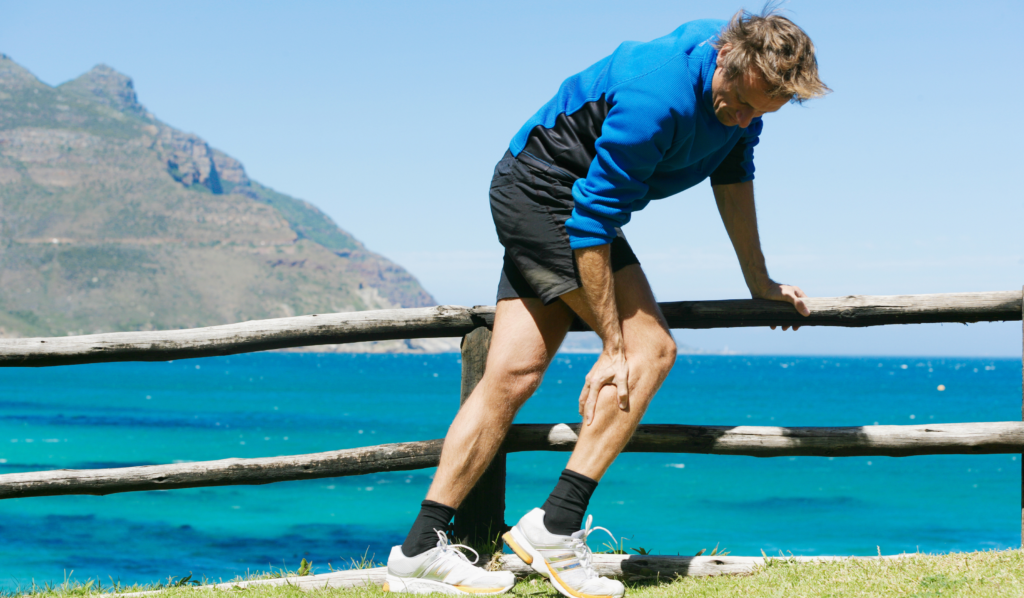Acupuncture for Calf Trigger Points
Calf pain can feel like an invisible barrier, disrupting your daily life and taking the joy out of movement. When the muscles in your calves develop tight, painful knots called trigger points, even basic activities like walking, running, or standing can become challenging. These small but powerful knots cause pain and stiffness, affecting mobility and overall physical performance. Fortunately, there is a natural, effective solution that goes beyond masking symptoms—acupuncture.
Acupuncture, a practice deeply rooted in Traditional Chinese Medicine (TCM), addresses the underlying causes of calf pain by targeting these trigger points. Through precise needle placement, acupuncture improves circulation, releases muscle tension, and restores balance to the body. Beyond physical relief, acupuncture promotes a profound sense of calm and relaxation, helping to alleviate stress that often contributes to muscular issues. Whether you are an athlete, a professional with a sedentary lifestyle, or someone recovering from an injury, acupuncture offers a holistic path to healing and mobility.
Anatomy and Function of the Calf Muscles
The Structure of the Calf
The calf is made up of two primary muscles: the gastrocnemius and the soleus, which together form the muscle group known as the triceps surae. These muscles work in unison to enable complex movements and provide stability during both motion and rest.
Gastrocnemius:
This is the more superficial and visible muscle of the calf. It originates from the femoral condyles, located at the lower end of the thigh bone, and inserts into the Achilles tendon, which connects to the heel bone (calcaneus). The gastrocnemius is primarily responsible for power-driven movements like jumping, running, and sprinting.
Soleus:
Found beneath the gastrocnemius, the soleus is a flatter, endurance-focused muscle. It originates from the tibia and fibula (the bones of the lower leg) and also attaches to the Achilles tendon. The soleus plays a critical role in maintaining posture and supporting prolonged activities like walking or standing.
These muscles work together as a functional unit, providing the strength and flexibility needed for a variety of daily and athletic activities.
Actions and Functions of the Calf Muscles
The calf muscles are responsible for two key actions: plantarflexion, which is the downward pointing of the toes, and knee flexion, or bending the knee. These actions are integral to walking, running, jumping, and maintaining balance.
During Movement:
The gastrocnemius generates bursts of power, propelling the body forward or upward. The soleus stabilizes the ankle and ensures smooth, controlled motion.
In Static Positions:
The calf muscles sustain tension to maintain posture, particularly when standing. This endurance function prevents fatigue and supports stability.
When these muscles are healthy, they allow for fluid movement and balance. However, when trigger points develop, they disrupt this harmony, leading to pain and dysfunction.
Understanding Calf Trigger Points
What Are Trigger Points?
Calf trigger points are hyperirritable knots within the muscle fibers that occur when muscles fail to release tension. These points often develop in response to overuse, injury, or repetitive strain. While trigger points can cause localized pain, their effects frequently extend beyond the immediate area, leading to referred pain in the knee, ankle, or foot.
Causes of Trigger Points
Several factors contribute to the formation of trigger points in the calf muscles:
Overuse or Repetitive Strain:
Activities like running, jumping, or prolonged standing place excessive stress on the calf muscles, increasing the likelihood of trigger point formation.
Poor Posture or Gait Mechanics:
Misalignments, such as flat feet or excessive pronation, can unevenly distribute stress on the calves.
Sudden Increases in Activity:
Abruptly increasing exercise intensity or duration can overwhelm the muscles.
Footwear Issues:
Shoes that lack proper arch support or cushioning can exacerbate muscle tension.
Trigger points not only cause pain but can also limit mobility and lead to compensatory injuries in other parts of the body.
Trigger Point Locations in the Calf
Trigger points commonly develop in specific areas of the gastrocnemius and soleus muscles.
Gastrocnemius Trigger Points:
These points are usually located in the inner and outer heads of the gastrocnemius.
Medial Gastrocnemius Trigger Points: These are found in the inner head of the gastrocnemius. Pain from these points often radiates to the knee, the back of the thigh, and the arch of the foot.
Lateral Gastrocnemius Trigger Points: These are located in the outer head of the gastrocnemius and can cause pain that extends to the outer side of the knee and sometimes the shin or outer calf.
Soleus Trigger Points:
The soleus typically develops trigger points near the Achilles tendon or in the mid-belly of the muscle. Pain from these points may extend to the heel, ankle, or lower calf.
Referred pain from calf trigger points can mimic conditions like plantar fasciitis, shin splints, or Achilles tendinitis, making accurate diagnosis crucial for effective treatment.
Symptoms of Calf Trigger Points
The symptoms of calf trigger points vary depending on the affected muscle but commonly include:
-
Persistent pain in the calf, heel, or foot.
-
Stiffness, particularly after prolonged sitting or inactivity.
-
Difficulty performing activities such as walking, running, or squatting.
-
Nighttime cramping or throbbing sensations that disrupt sleep.
If left untreated, trigger points can worsen over time, leading to more widespread pain and functional limitations.
Calf Trigger Points and Their Impact
Calf trigger points, particularly in the gastrocnemius and soleus muscles, are a common source of pain and dysfunction that can extend beyond the calves. These trigger points can interfere with mobility and are linked to conditions such as calf cramps and jogger’s heel, frequently reported by individuals experiencing calf-related discomfort.
Gastrocnemius: The “Calf Cramp Muscle”
The gastrocnemius is often called the “calf cramp muscle,” especially in cases of nocturnal calf cramps. Its function of crossing both the knee and ankle joints explains why its pain can radiate to various areas.Associated trigger points in nearby muscles—such as the soleus, hamstrings, toe flexors, and tibialis posterior—should also be addressed to achieve complete relief.
Soleus: The “Jogger’s Heel Muscle”
Known as the “jogger’s heel muscle,” the soleus is often linked to heel pain and posterior ankle discomfort. It plays a crucial role in stabilizing the ankle during activities like walking and running.
In rare cases, soleus trigger points may refer pain to the same side of the jaw, as noted in clinical studies. Addressing interconnected points, such as those in the gluteus minimus, enhances treatment outcomes for the lower leg.
The Plantaris Muscle
Although small and often overlooked, the plantaris muscle can contribute to posterior leg and knee pain. This weak plantar flexor of the knee and ankle is sometimes absent in individuals, but when present, its trigger points may still cause discomfort. Including the plantaris in assessments ensures comprehensive treatment of calf-related issues.
A Holistic Perspective on Calf Pain
The interconnected nature of calf cramps and jogger’s heel underscores the importance of addressing calf trigger points comprehensively. By targeting the gastrocnemius, soleus, and plantaris muscles, acupuncture provides an effective solution to reduce pain, restore mobility, and enhance muscle function. This approach allows for precise diagnosis and a thorough resolution of calf-related conditions without redundancy.
Acupuncture for Calf Trigger Points
How Acupuncture Works
Acupuncture is a proven therapy for addressing trigger points and the associated pain. By inserting fine needles into specific points in the calf muscles, acupuncture:
- Stimulates blood flow to the affected area, improving oxygen and nutrient delivery to the muscles.
- Releases tension in the muscle fibers, allowing them to relax and recover.
- Activates the body’s natural healing mechanisms by promoting the release of endorphins and reducing inflammation.
This approach not only provides relief from pain but also addresses the root causes of trigger points, promoting long-term muscle health.
Benefits of Acupuncture for Calf Muscles
Acupuncture offers multiple benefits for individuals suffering from calf pain:
Pain Relief: Alleviates both localized and referred pain caused by trigger points.
Improved Flexibility: Reduces muscle stiffness, enhancing range of motion.
Holistic Healing: Addresses contributing factors like stress, poor circulation, and imbalances in the body.
Complementary Techniques
To enhance the effectiveness of acupuncture, various complementary therapies can be integrated into a treatment plan. These approaches work synergistically to provide more comprehensive relief from calf trigger points and improve overall muscle health:
Cupping Therapy:
This technique involves placing heated cups on the skin to create suction, which increases blood flow and relieves tension in deeper muscle layers. It is particularly beneficial for chronic tightness in the calves, as it promotes relaxation and accelerates recovery.
Electroacupuncture:
Mild electrical currents are applied through acupuncture needles to stimulate deeper trigger points and enhance the release of muscle tension. This method is ideal for addressing severe or persistent pain in the gastrocnemius and soleus muscles.
Moxibustion:
Using burning moxa (dried mugwort) near the skin, this therapy provides soothing warmth to improve energy flow and circulation in the affected area. It is especially effective for alleviating stiffness and tension caused by cold or fatigue.
Reflexology:
This practice focuses on applying pressure to specific reflex points on the feet that correspond to different areas of the body, including the calves. Reflexology can help improve blood circulation, relax tight calf muscles, and address imbalances contributing to pain and discomfort. By stimulating these reflex points, reflexology complements acupuncture by promoting systemic healing and relieving tension in the lower legs.
Incorporating one or more of these therapies alongside acupuncture creates a holistic treatment plan that not only addresses trigger points but also supports the body’s overall well-being. Each of these methods enhances circulation, reduces muscle tightness, and restores balance, making them powerful tools for long-term recovery.
Calf Muscle Corrective Exercises
To effectively strengthen and stretch the calf muscles, it’s important to target both the gastrocnemius and soleus muscles, as each plays a distinct role in lower leg function.
Gastrocnemius Corrective Exercises
Standing Calf Raises: Stand near a wall or sturdy surface for balance. With feet hip-width apart and knees straight, rise onto the balls of your feet, lifting your heels as high as possible. Pause briefly, then lower your heels back down. This exercise primarily targets the gastrocnemius muscle.
Wall Stretch: Stand facing a wall with one foot forward and the other extended back. Keep the back leg straight and press the heel into the ground while leaning forward slightly. This stretch focuses on the gastrocnemius muscle.
Soleus Corrective Exercises
Seated Calf Raises: Sit on a chair with your feet flat on the ground. Place a weight (like a dumbbell) on your thighs, close to your knees. Keeping your knees bent at 90 degrees, raise your heels by pressing onto the balls of your feet, then lower them back down. This exercise emphasizes the soleus muscle.
Wikipedia
Bent-Knee Calf Stretch: Stand facing a wall with one foot forward and the other extended back. Bend both knees slightly while keeping both heels on the ground. Lean into the wall until you feel a stretch in the lower calf of the back leg. This stretch targets the soleus muscle.
Preventive Measures
- Progressive Loading: Gradually increase the intensity and duration of activities to prevent overuse injuries.
- Regular Stretching: Incorporate both dynamic stretches before exercise and static stretches afterward to maintain flexibility.
- Proper Footwear: Wear supportive shoes that provide adequate cushioning and arch support to reduce strain on the calf muscles.
- Hydration and Nutrition: Maintain proper hydration and electrolyte balance to prevent muscle cramps and tightness.
- Massage Therapy: Regular massage can help alleviate muscle tightness and improve circulation in the calf muscles.
By incorporating these exercises and preventive strategies, you can enhance the strength and flexibility of both the gastrocnemius and soleus muscles, contributing to overall lower leg health and function.
Scientific Research on Acupuncture for Calf Trigger Points
Acupuncture has been extensively studied for its effectiveness in treating calf trigger points, with results highlighting its ability to reduce pain, improve mobility, and enhance muscle performance. Trigger points in the calf muscles, particularly in the gastrocnemius and soleus, often cause significant discomfort and can interfere with daily activities, athletic performance, and overall quality of life. Acupuncture addresses these issues through precise needle placement, offering both localized and systemic relief.
Research shows that acupuncture can significantly alleviate muscle pain by deactivating trigger points and improving blood flow to the affected areas. This increased circulation delivers oxygen and nutrients essential for muscle recovery while helping to reduce inflammation and promote relaxation in tight muscle fibers. These effects make acupuncture an effective treatment not only for acute calf pain but also for chronic conditions involving persistent muscle tension.
Studies also reveal that acupuncture enhances muscle function by improving plantar flexion torque and ankle joint range of motion (ROM). Plantar flexion torque, the strength required to push off the ground with the toes, often becomes compromised due to trigger points or muscle tightness. Acupuncture has been shown to restore this strength while increasing ankle ROM, which is crucial for fluid and efficient movement. These changes are accompanied by improved blood flow, as indicated by elevated skin temperature in treated areas, demonstrating the treatment’s ability to promote muscle relaxation and flexibility. For athletes and individuals recovering from injuries, this benefit ensures faster recovery and more consistent performance.
What makes acupuncture particularly effective is its overlap with neuromuscular pathways. Many trigger points align with classical acupuncture points, which have been used for centuries to address pain and dysfunction. By targeting these points, acupuncture simultaneously relieves muscle tension and restores balance to the body’s energy systems. This dual approach not only addresses the immediate source of discomfort but also supports long-term recovery.
Beyond its physical benefits, acupuncture has also been shown to influence the body’s pain perception and healing mechanisms. By stimulating the release of endorphins and reducing stress-related hormones, acupuncture helps patients feel more relaxed and experience lasting relief from both localized pain and referred symptoms.
Who Can Benefit from Acupuncture for Calf Trigger Points?
Acupuncture is a versatile treatment suitable for various individuals:
Athletes and Fitness Enthusiasts: Relieves overworked muscles and enhances recovery.
Professionals with Sedentary Lifestyles: Addresses tightness caused by prolonged sitting or poor posture.
Chronic Pain Sufferers: Provides relief from conditions like plantar fasciitis and shin splints.
Older Adults: Improves mobility and reduces stiffness from age-related muscle changes.
Injury Recovery Patients: Promotes healing and prevents scar tissue formation.
Start Your Journey to Pain-Free Calves
At ACA Acupuncture and Wellness, we are committed to helping you achieve lasting relief from calf pain. Our skilled practitioners use acupuncture and complementary therapies to address trigger points, reduce pain, and improve mobility. Whether you are managing chronic discomfort or recovering from an injury, our personalized approach ensures effective, long-term results. Take the first step toward a life free from calf pain by scheduling a consultation today.
Sources:
Edgerton, V. R., Smith, J. L., & Simpson, D. R. (1975). Muscle fibre type populations of human leg muscles. Histochem J, 7(3), 259–266.
Iwai, T., Sato, S., Yamada, T., Muraoka, Y., Sakurazawa, K., Kinoshita, H., Inoue, Y., Endo, M., Yoshida, T., & Suzuki, S. (1987). Popliteal vein entrapment caused by the third head of the gastrocnemius muscle. Br J Surg, 74(11), 1006–1008.
Spina, A. A. (2007). The plantaris muscle: Anatomy, injury, imaging, and treatment. J Can Chiropr Assoc, 51(3), 158–165.
Cruz-Montecinos, C., González Blanche, A., López Sánchez, D., Cerda, M., Sanzana-Cuche, R., & Cuesta-Vargas, A. (2015). In vivo relationship between pelvis motion and deep fascia displacement of the medial gastrocnemius: Anatomical and functional implications. J Anat, 227(5), 665–672.
Frequently Asked Questions
How do you release trigger points in your calves?
Trigger points in the calves can be released through a combination of self-care techniques and professional treatments. Foam rolling and targeted stretching are effective self-care methods. Applying pressure to tender areas using a foam roller or massage ball can help loosen muscle knots. Holding steady pressure on the affected area for 30 to 60 seconds encourages the muscle fibers to relax. Professional treatments such as acupuncture and cupping therapy are also highly effective in addressing trigger points. These therapies target the underlying tension, promote better circulation, and enhance the body’s natural healing processes.
What deficiency causes tight calves?
Tight calves are often linked to deficiencies in certain nutrients. A magnesium deficiency is one of the most common causes, as this mineral plays a crucial role in muscle relaxation and preventing cramping. Potassium deficiency can also contribute to muscle tightness, as it helps maintain proper electrolyte balance and nerve function. Additionally, dehydration or a lack of sodium can lead to muscle tension. Ensuring a well-balanced diet that includes these essential nutrients, along with proper hydration, can significantly reduce the risk of tightness in the calf muscles.
Can acupuncture really help with calf muscle pain?
Yes, acupuncture is highly effective for calf muscle pain, including pain caused by trigger points. By inserting fine needles into specific points, acupuncture stimulates blood flow, reduces inflammation, and releases muscle tension. It also promotes the release of endorphins, the body’s natural pain relievers, helping to alleviate discomfort and improve overall muscle function.
Why do my calves feel tight after exercise?
Tight calves after exercise are often the result of muscle fatigue and microtears caused by intense activity. During exercise, the calf muscles contract repeatedly, which can lead to a buildup of lactic acid and temporary stiffness. Overuse or improper warm-ups can also contribute to post-exercise tightness. Proper stretching before and after physical activity, along with adequate hydration, can help reduce this sensation.
Are tight calves a sign of a bigger issue?
Tight calves can sometimes indicate an underlying issue, especially if the tightness is persistent or accompanied by other symptoms. Conditions like Achilles tendinitis, plantar fasciitis, or deep vein thrombosis (DVT) can manifest as calf tightness. If the tightness is severe, accompanied by swelling, discoloration, or sharp pain, it is important to consult a healthcare professional for a thorough evaluation.
How does poor posture contribute to tight calves?
Poor posture, such as slouching or misaligned gait mechanics, places uneven stress on the calf muscles. For example, excessive pronation while walking or standing shifts extra weight onto the calves, causing them to work harder and leading to tension. Addressing posture and wearing supportive footwear can help reduce the strain on the calves.
Can dehydration cause calf cramps and tightness?
Yes, dehydration is a common cause of calf cramps and tightness. When the body lacks sufficient water, muscle cells struggle to maintain proper function, leading to involuntary contractions and cramping. Drinking enough water throughout the day, particularly during and after exercise, is essential to preventing this issue.
How long does it take to recover from calf trigger points?
The recovery time from calf trigger points depends on the severity of the condition and the treatments used. Mild trigger points may resolve with self-care techniques such as stretching and foam rolling in a few days. More persistent or chronic cases may require several acupuncture or physical therapy sessions over weeks to achieve full relief. Consistency in treatment and preventive care is key to lasting results.
Contact ACA Acupuncture & Wellness
Get in Touch
Newsletter Sign Up
ACA Franchise Opportunities
The over $4 billion US acupuncture market offers a great opportunity with over 10% annual growth rates and a continuing flow of new patients interested in the benefits of acupuncture.


